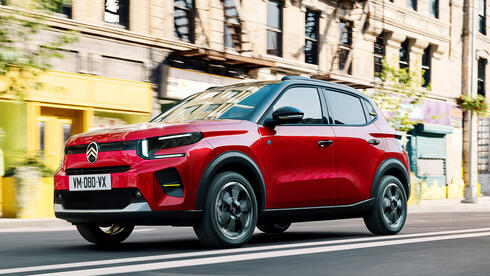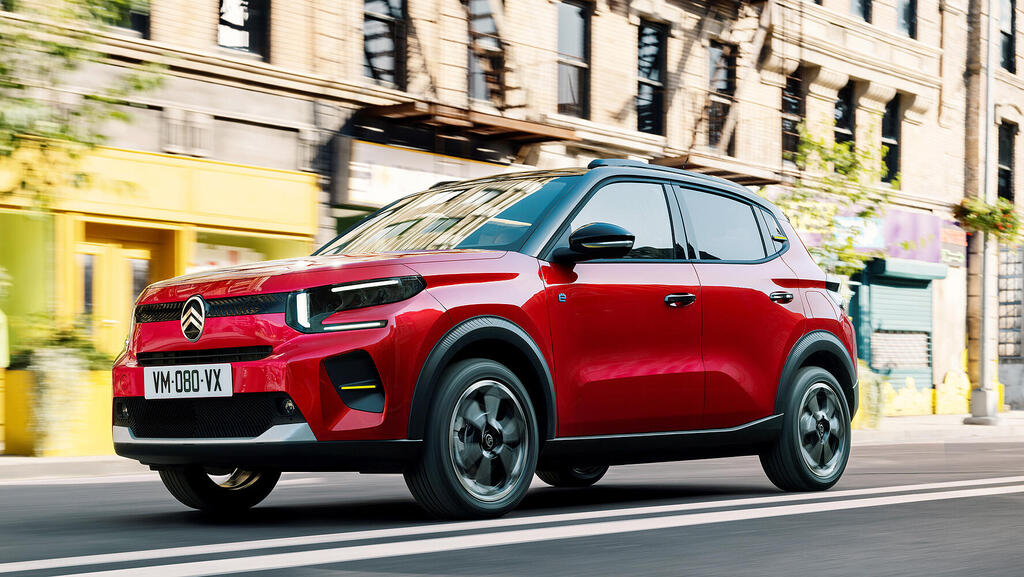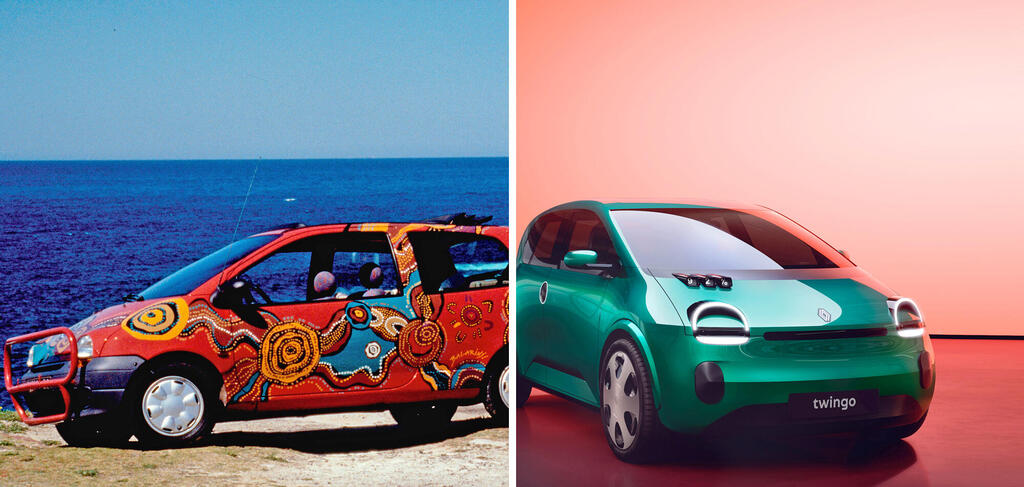
Retro auto: European car manufactures hope retro is the next big thing
European automakers, struggling to compete with Tesla and the threat from China, are bringing iconic urban models back to life. Renault unveiled a Twingo, Fiat is preparing to introduce a Panda and Citroën will produce a 3C. They hope to win hearts through the legacy of the design, even if the battery won't be the most sophisticated
About two weeks ago, the French automaker Renault held a big event for investors, during which it revealed its plans for the future. The main news that came out of there was the revival of one of the most successful and hottest models in Renault's history, the Twingo.
Renault has always known how to provide the masses in France with simple, small and efficient means of transportation: the small and simple Renault 4 was intended for the French who wanted something more luxurious than a Citroën deux chevaux and would include "treats" such as a metal roof, windows that can be opened and the ability to cruise at a dizzying speed of 120 km/h. Renault 5 was a continuation of that small Renault 4. Then came the Clio, and then Renault remembered that they needed to "go back to their roots" with a car that would be even smaller than the Clio, which gave birth to the lovely Twingo. Now there is a new Twingo, but for now only as a show car.
Renault is not the only manufacturer that these days returns to the small and beloved models. The Italian Fiat is preparing to introduce a new Panda. Fiat is another manufacturer that specializes in the production of small cars. The original Topolino was a tiny car intended for the common Italian people. The Fiat 500 was also a small car designed to allow an Italian family to roam the streets of Rome in the 1960s and do it cheaply. In the 1980s came the Fiat Panda, a car that can only be described as a "box on wheels". The Panda was simple, slow and beloved, and now it is expected to return - in an electric version. The new Panda doesn't exist yet, but Fiat is already promising it to the masses.
And another manufacturer that joins the return to the small cars is the French Citroën, which is about to bring the electric Citroën C3 to the world. Citroën realized even before World War II that the French needed a small and simple car, dedicated to the requirements of the average Frenchman: an "umbrella on wheels", as defined by the designer, with an engine that can be repaired with barbed wire and the ability to cruise the cobbled streets of Paris and also between villages in Provence in safety and comfort. This is how the Citroën de chevaux, Citroën Visa, Citroën AX and Citroën C3 were born - and now an electric Citroën C3 is about to be born.
All the original cars that gave birth to these sequels have a lot in common: they are all European, all small, all cheap, all designed to adapt to local road conditions. When Citroën designed the De Chevaux, it had in mind a French customer in Paris; When Fiat designed the Panda, it had unpaved roads in Tuscany in mind, and even introduced a two-wheel drive version for those living in the Alps.
This approach has worked well for the automakers. All these cars, starting with the Panda and ending with the Renault 4, were enourmous hits that lasted decades with almost no change in production. But today, with the transition of the industry to electricity, the European car industry is in a challenging place. No matter how many statements the European manufacturers release about their intentions to build green and electric cars, in practice whatever they are trying isn't working. In the first half of the year, the best-selling electric car in Europe was the Tesla Model Y, with 138,814 deliveries. In second place is the Tesla 3 with 43,131 deliveries. And the Europeans? Volvo managed to deliver 42,207 cars; Volkswagen ID 4 delivered 41,733 cars; and Volkswagen ID 3 delivered 35,415 vehicles. These are not impressive numbers at all in a market whose volume during this period was about a million cars. And let's not forget: Chinese car manufacturers are threatening the European car market with cheap, accessible and ready-to-buy electric cars now.
For these reasons, it is understandable why the European car manufacturers have now decided to shake out the familiar names of the beloved models. The European manufacturers simply do not have much to sell to those who want to purchase an electric car. The experience of manufacturers such as Volkswagen, who declared war on Tesla and failed miserably, discourages the big and old European manufacturers from trying to compete with Tesla on its own turf - leaving the European automakers only to cling to the past.
By the way, Volkswagen, the manufacturer that brought the mythical Beetle into the world, chose not to go for a retro electric car. According to Volkswagen, it will present the 2 ID, a small city car that has nothing to do with the Beetle, not even on a conceptual level. This is due, among other things, to the fact that Volkswagen already tried to produce a modern Beetle about a decade ago, and was not very successful at the time. Apparently there are cars that are so iconic that their success cannot be replicated.
Any manufacturer can make an electric car, but only a few can make an electric car that is both cheap and loved, and this is where the historical connection comes in: small city cars are not only "cute", they are also cheap. It is no coincidence that all the European car manufacturers who are now talking about new electric cars emphasize that their new electric cars will be urban. They understand that at this stage there are not many niches in which they can play and win.
Most of the European manufacturers that recently announced the introduction of city cars presented a target price of around only 20,000 euros. Why? Because it's a price that will put their cars head to head with the Chinese. But how can a small European city car defeat a larger Chinese electric car? This is where the formula that served European car manufacturers in the seventies and eighties comes into play: the customer doesn't pay for size, they pay for style, feeling and heritage. The fact that Renault Twingo and Fiat Panda have been resurrected is no accident: you can charge more money for a retro car. And another important point: a city car means that it is not intended for long trips, which means there is no need to equip it with a sophisticated and expensive battery.
Until recently, a manufacturer would present a car, and customers would be able to buy it in a short time. But the cars that the European manufacturers presented exist only on paper, as mere sketches. Why is this happening? Because the European manufacturers lack a critical link: the battery.
What the manufacturers who promised the masses a retro electric car have in common is not only nostalgia but also a price that is considered low for an electric car, 20,000 euros. This price is not attainable at this stage because the manufacturers do not have the ability to optimize the production of the batteries and the process of obtaining the raw materials. Therefore, it is no coincidence that these small city cars appear today mainly in presentations to investors and not in showrooms.
Will small European electric cars become the next hot thing? At this stage it is difficult to say. To produce a car that is truly retro you need not only available technology, but also an audience that appreciates retro, and is willing to ignore disadvantages such as small dimensions and a limited driving range. The European car manufacturers, it seems, have forgotten what made them in demand in their home countries in the first place: style, performance and fun. Now they will have to work very hard to win back consumers, to do it cheaply and in just one year.















